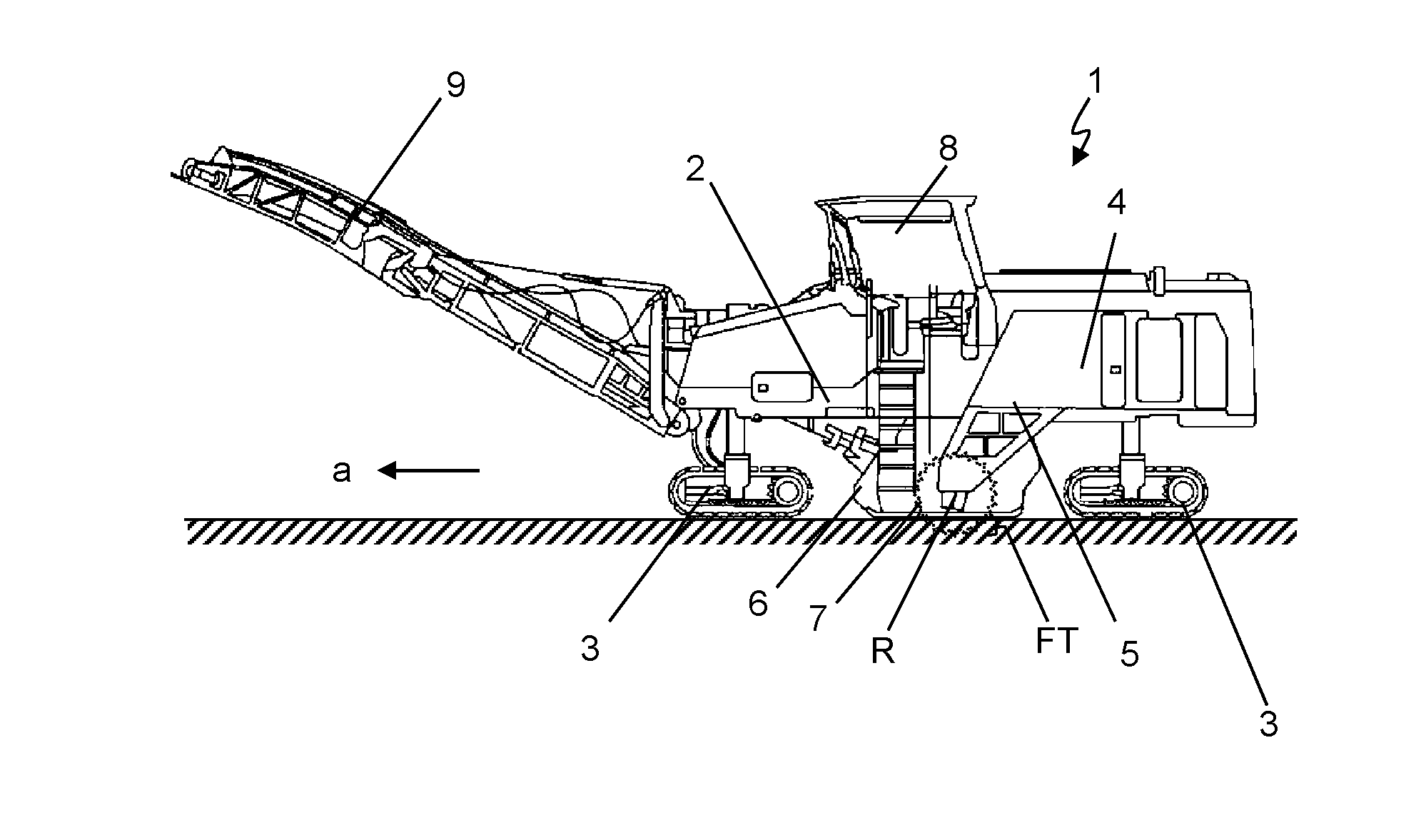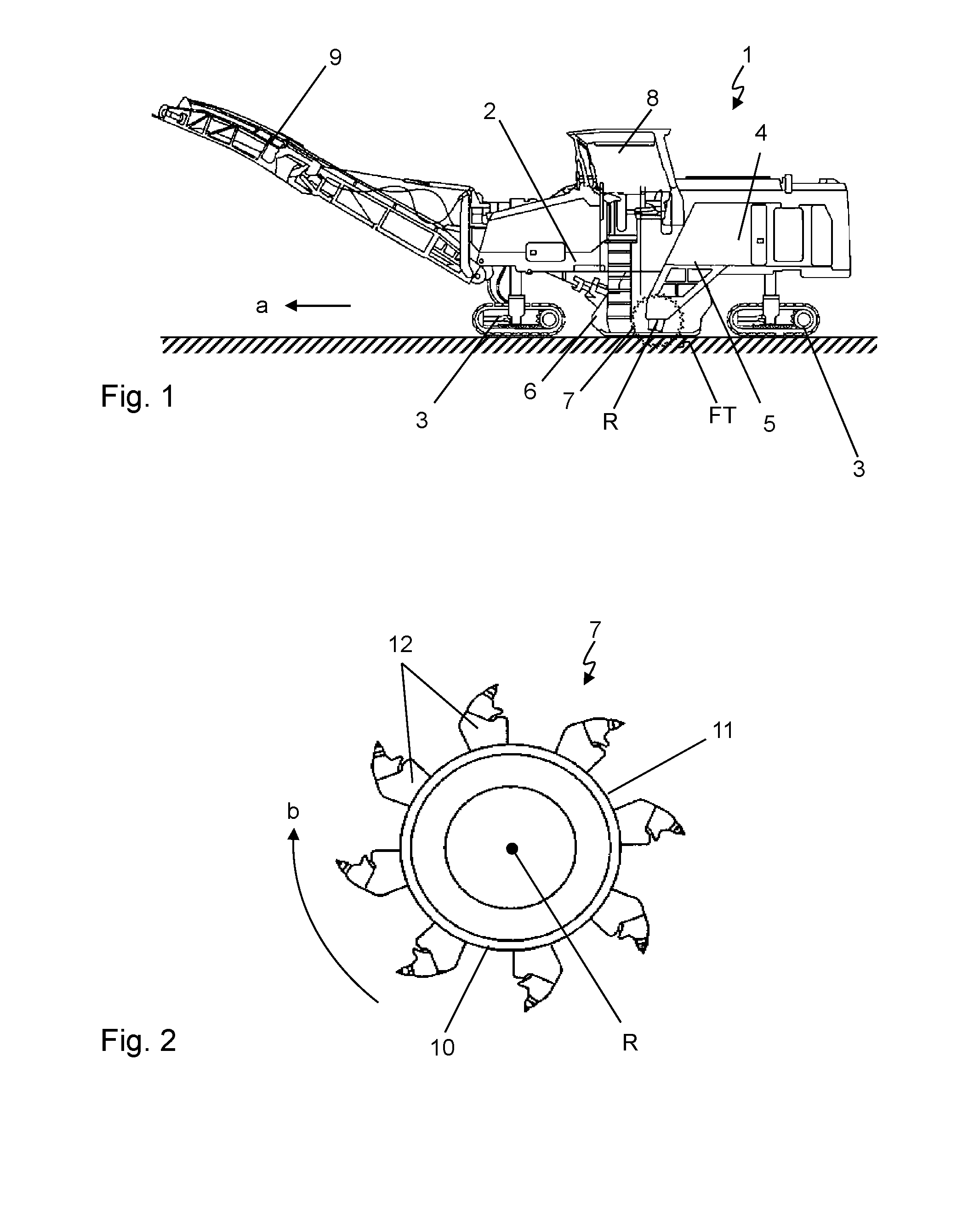Method For Optimizing An Operating Function Of A Ground Milling Machine And Ground Milling Machine
a ground milling machine and operating function technology, applied in the direction of electric digital data processing, instruments, constructions, etc., can solve the problems of inability to achieve milling performance per fuel consumption, comparatively high operating costs of such ground milling machines, etc., to achieve uniform milling operation, reduce operating costs, and reduce operating costs
- Summary
- Abstract
- Description
- Claims
- Application Information
AI Technical Summary
Benefits of technology
Problems solved by technology
Method used
Image
Examples
Embodiment Construction
[0033]Essential elements of the ground milling machine 1, which is implemented as a road milling machine of the middle rotor milling machine type, shown in FIG. 1 are, in particular, a machine frame 2, travel units 3, and a main drive unit 4 not indicated in greater detail, which is connected to a milling drum 7 arranged in a milling drum box 6 via a drive train 5. Furthermore, a driver's cab 8 and a conveyor belt 9 are provided, via which milled material can be transported away from the ground milling machine 1. In work operation, the ground milling machine 1 travels, with the milling drum 7 lowered into the ground subsoil at the milling depth FT, in the working direction a over the ground subsoil, milling off ground subsoil material to the desired depth at the same time.
[0034]The essential element of the milling drum 7, which is only indicated very schematically in FIG. 1, is a hollow-cylindrical support tube 10, on the outer jacket surface 11 of which a plurality of milling tools...
PUM
 Login to View More
Login to View More Abstract
Description
Claims
Application Information
 Login to View More
Login to View More - R&D
- Intellectual Property
- Life Sciences
- Materials
- Tech Scout
- Unparalleled Data Quality
- Higher Quality Content
- 60% Fewer Hallucinations
Browse by: Latest US Patents, China's latest patents, Technical Efficacy Thesaurus, Application Domain, Technology Topic, Popular Technical Reports.
© 2025 PatSnap. All rights reserved.Legal|Privacy policy|Modern Slavery Act Transparency Statement|Sitemap|About US| Contact US: help@patsnap.com



